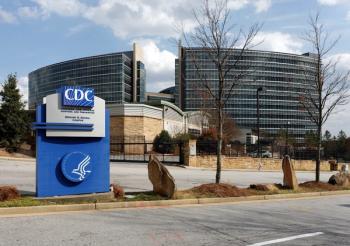
How to recruit and retain young physicians
It’s not all about compensation for those fresh out of residency. Here’s what they are looking for.
With the physician shortage remaining a large concern for healthcare providers in 2018, a new study from medical employment firm CompHealth identified ways young physicians find their first positions, what they want in a job, and why they leave.
Not surprisingly, the survey found that young physicians are looking for good compensation. But money’s not all they’re looking for. Lisa Grabl, president of Midvale, Utah-based CompHealth, says facilities should be aware that young physicians also want to work in a place that has a great culture and offers a good work/life balance.
“If you’re not strong in these areas, look for ways to improve, or you’re going to lose out on attracting the best talent,” Grabl says.
For many years, physicians were willing to work incredibly long hours and make their career the center of their lives. Millennial physicians still care about their patients and career, but they also want to have time for family, friends and interests outside of medicine, which is why many healthcare facilities have adjusted their recruiting tactics to show how they can meet all of the physicians’ needs-not just their at-work requirements.
Jennifer Moody, an associate principal at ECG Management Consultants, a Dallas, Texas-based medical staffing company, says physicians in their first job are looking to build upon the clinical expertise they’ve been developing in residency/fellowship.
“It is important to many that they find a practice opportunity that allows them an interesting case mix,” she says.
Also important, she notes, is any opportunity for improved financial stability-such as loan forgiveness, net income guarantees or a signing bonus, as quite often, new physicians have a great deal of educational debt.
Chris Borasz, manager of physician and provider recruitment for OhioHealth in Columbus, Ohio, says when recruiting, it’s important to think about the total family, not just the physician and consider what in the community can support the spouse or partner.
“It’s finding things that are helping to engage that person in connectivity to community,” Borasz says. “The development and support as they ramp up is important, but also think about that long-term development.”
Finding Work
According to the survey, 40 percent of placements are a result of referrals and networking. Only 12 percent of young doctors use social media to find work, despite spending between five and 19 hours a week online for personal use.
Moody says that millennials especially will often utilize social media to look for practice opportunities, confer with peers about salary norms or contract requirements on [social media-based] message boards, and research potential locations [to work] on the internet. Therefore, if practices are only advertising in specialty journals or hoping to network at society meetings, they will miss out on many candidates.
The Key to Retention
The survey found that physicians are generally quite satisfied in their jobs but are also willing to change employers if they can find a better fit. The key to retention, Grabl notes, is listening to physicians to ensure their needs are being met.
She suggests holding stay interviews at intervals after the physician has been recruited-at three months, six months and a year-where they can monitor how the physician and his or her family are integrating into the practice and community. This would involve simply talking to the doctor and his family about what they like, what they feel is missing in their lives, and recommending solutions to fix any problems and concerns.
Grabl says this is important because young physicians today want more than just a good working opportunity.
“They are still willing to work, and work hard, but they also want more in their lives,” she says. “That could be implementing more flexible schedules, reducing on-call requirements or bringing in locum tenens physicians to allow for vacation time or help with patient load.”
Newsletter
Stay informed and empowered with Medical Economics enewsletter, delivering expert insights, financial strategies, practice management tips and technology trends — tailored for today’s physicians.















